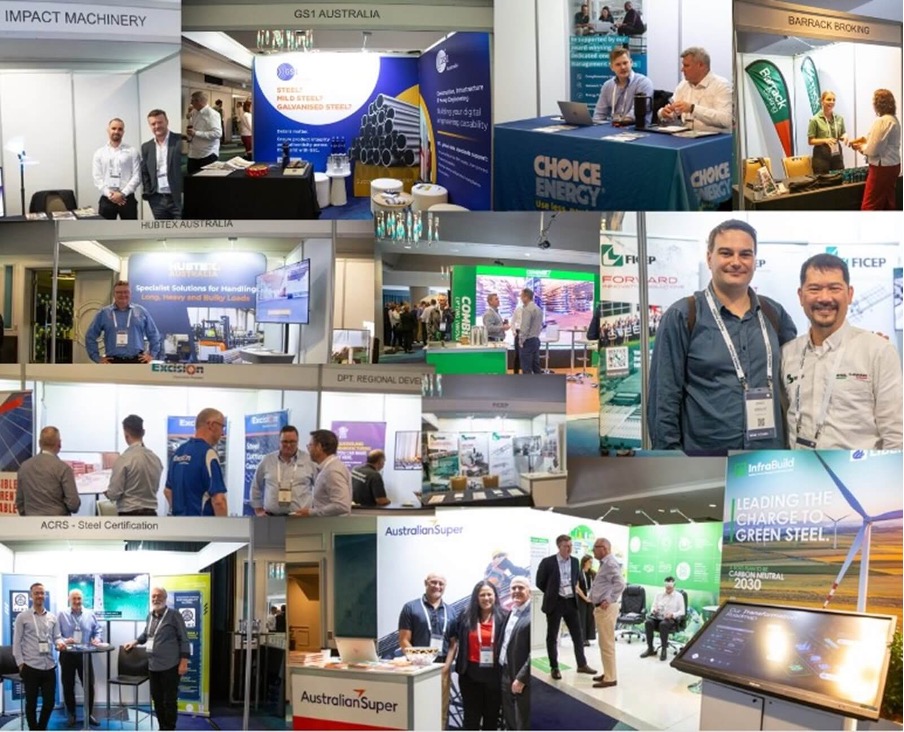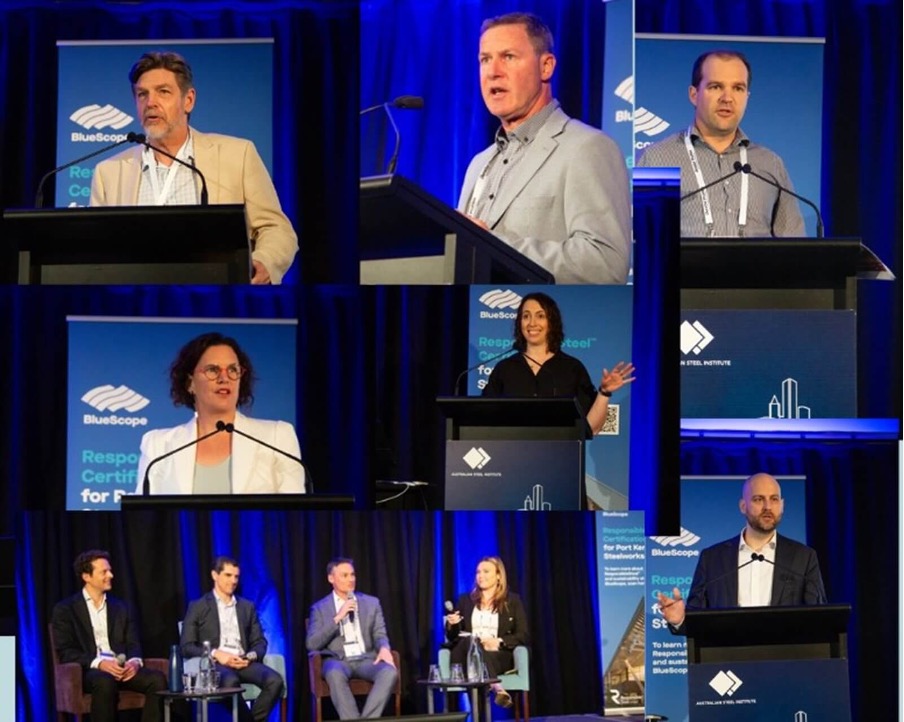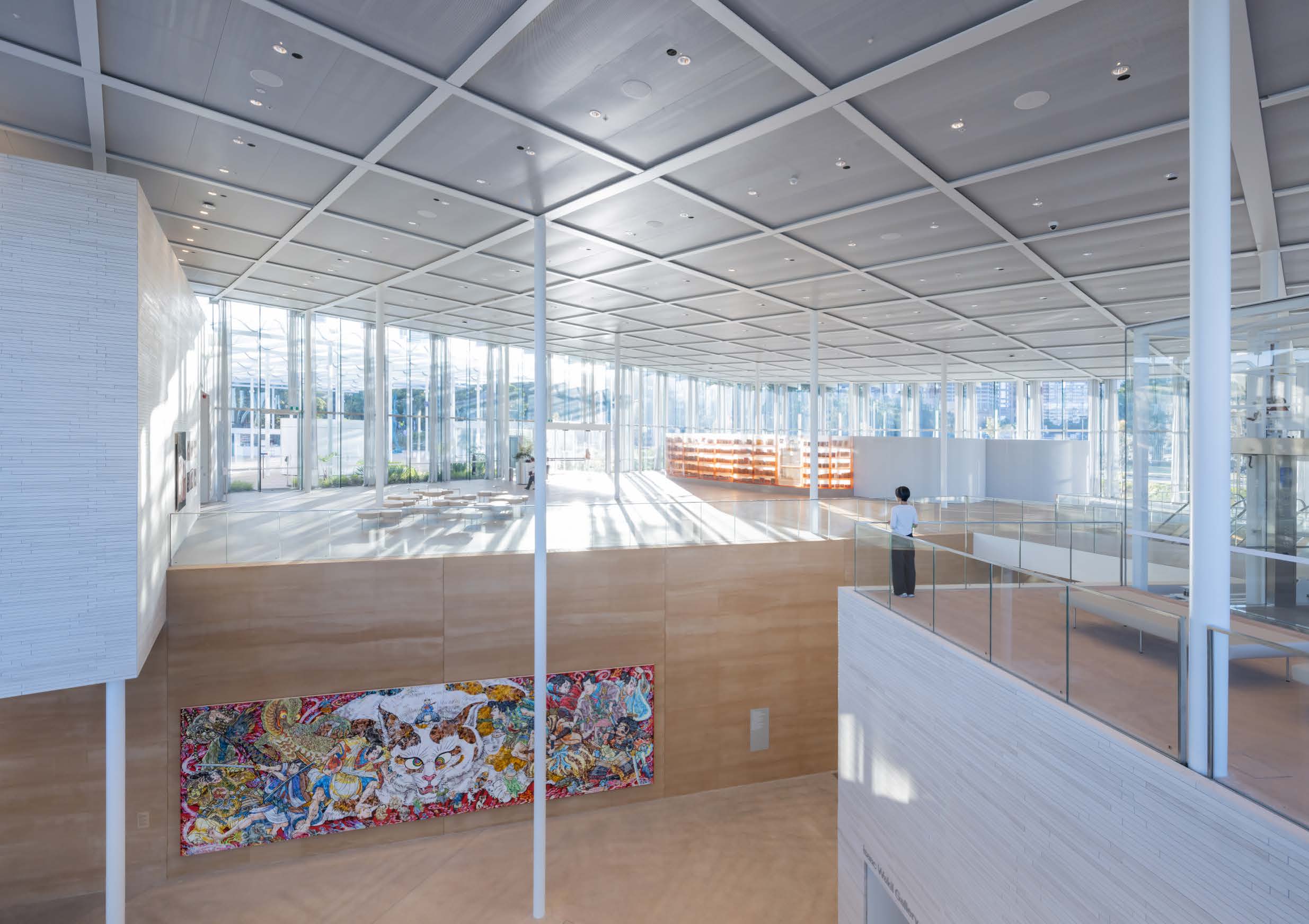Expert commentary on steel’s move to net zero, a feature-packed exhibition space and cutting-edge virtual reality: this year’s ASI Australian Steel Convention in Brisbane had it all.
More than 200 attendees witnessed sustainable steel solutions up close while hearing from expert speakers from Australia and abroad on the industry’s sustainable future at the ASI Australian Steel Convention. With the theme of Sustainable Building and Infrastructure: What It Takes, the three-day convention kicked off on Sunday 8 September. Sponsored by Combilift, the welcome reception was held at Brisbane’s Sixteen Antlers Pullman’s rooftop bar.
The night’s festivities provided those in attendance with the opportunity to chat informally, and compare notes ahead of the formal convention program. Attendees were welcomed by ASI chief executive Mark Cain and heard from Chris Littlewood, Combilift’s Australian country manager.
Day One
The first day of the convention boasted a feature-packed speaker lineup, kicked off by a welcome address from chair of the ASI Tony Schreiber. There were invited presentations by chief executive Australian steel products at BlueScope Tania Archibald and chief executive officer of InfraBuild Francisco Irazusta.
Demographer Bernard Salt delved into the role and opportunity for Australian steel in building a better future. Bernard provided demographic insights and highlighted important trends shaping the nation and impacting the steel supply chain.
Stuart Wilson from AustralianSuper and Phil Hodgson from Calix discussed Australia’s clean energy transition and investment pipeline.
A design for deconstruction panel proved to be a hit, with expert speakers including Alex Edwards from ARUP, Al Baxter from Populous, Hannah Jones from TTW Engineers and Ed Bond from Robert Bird Group.
Associate professor at Coimbra University Helena Gervasio provided an overview of the environmental sustainability of steel in the building and construction industry, focused on recycling and reuse of steel in life-cycle analysis.
The day was closed by an insightful and inspiring session from Tom Nash—a quadruple amputee. Tom spoke about the links between being forced to think differently to solve problems, and the lateral thinking methods involved in overcoming challenges.

Day Two
Day two saw the return of the always popular case studies. Associate structural engineer at Arup Michaela Brown presented a case study on the Art Gallery NSW extension project. Rowan Dillon from the Fitzroy Bridge Alliance presented a case study on the Fitzroy River Bridge project.
The day also included presentations on the use of artificial intelligence (AI) in construction and steel supply chain applications by David Porter from Octant AI; the Australian infrastructure landscape and opportunities for the local steel industry by Adam Copp from Infrastructure Australia; and a practical approach to repurposing steel by Jeremy Hawkes from Bowhill Engineering.
The last formal session of the convention was a popular panel that discussed the opportunities for the steel supply chain associated with the Brisbane 2032 Olympic Games. Panel members included Sheree Taylor from BlueScope, Bradley Wood from GHD, Joseph Pirrello from Aurecon and Michael Whitehead from the Brisbane 2032 Olympic and Paralympic Games Organising Committee.
The ASI would like to thank its platinum partners BlueScope and InfraBuild; its major partners BlueScope, Combilift, Australasian Certification Authority for Reinforcing and Structural Steels (ACRS) and the Queensland Government; its supporters AA Steel Works, DuraGal Profiles and Southern Steel; and all the exhibitors.

AI the way of the future?
AI and robotics not only save time, but also potentially save lives by minimising human error and ensuring a safer working environment, Professor Cori Stewart told day two of the convention.
Significantly, AI and robotics accelerate the creation of novel capabilities and the potential to create a step change in Australia’s global competitiveness, she said.
Professor Stewart is the founder and CEO of the Advanced Robotics for Manufacturing (ARM) Hub, Australia’s leading AI, robotics and design-for-manufacture industry innovation hub. She is helping drive productivity in Australian manufacturing through technology commercialisation using
AI and robotics.
“In the highly competitive steel industry, AI and automation is helping Australia realise business growth and competitiveness, commercialise research and development, address skills shortages, and compete in an economy that is rapidly decarbonising,” Professor Stewart said.
According to Professor Stewart, growth in the manufacturing industry— including steel—was likely because of the baked-in demand for green energy. However, accelerated AI and automation was required to ensure Australia’s competitiveness. “We want these technologies to be instrumental in creating higher-value products and services that are meeting customer demand. Australian productivity is the worst it has been in 60 years and that is clearly at the centre of our global competitiveness challenges.”
“Currently Australia owns another poor productivity statistic that out of 38 developed countries we rank 35th in robot population density, but after some time declining we may be starting gradually to inch our way up. Getting ahead will require more than ‘business as usual’. It will require disruption and innovation. AI and robotics provide that opportunity.”
Professor Stewart said Australian successes in AI and robotics include Boeing Australia’s delivery of the Ghost Bat autonomous warfighting aircraft and the automation of more than 700 Caterpillar, Komatsu and Hitachi haulage trucks in the Pilbara mines.
“This is the kind of high-value, highly skilled industry Australia needs. We need it to back our steel industry and therefore we need to nurture our local tech capability. We also need to keep Australia’s data local and monetise its value here. When I travel overseas and visit manufacturers, one thing you don’t see is them giving their data away to other companies or other countries,” Professor Stewart said.










